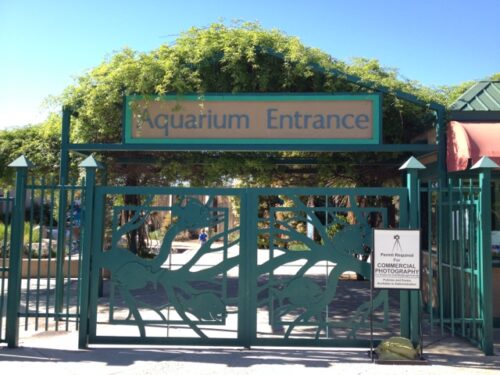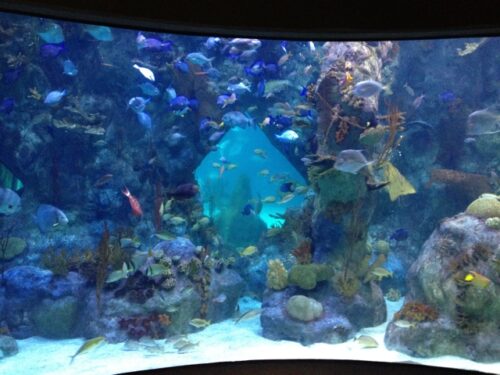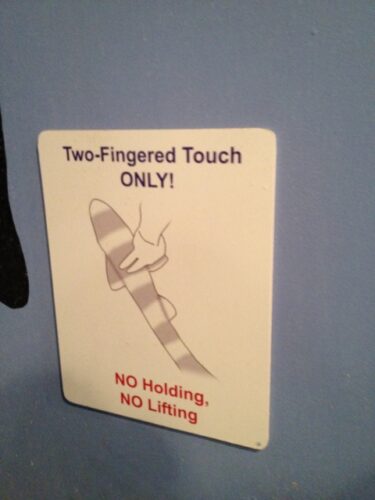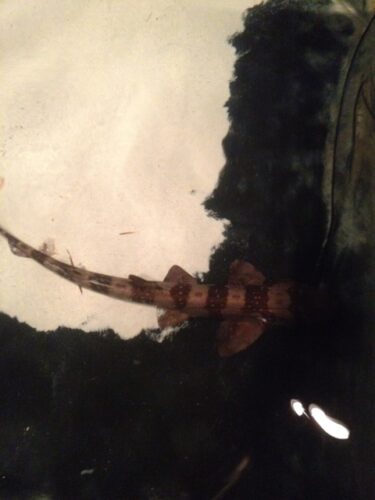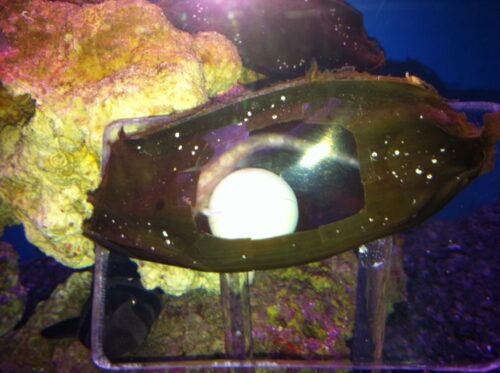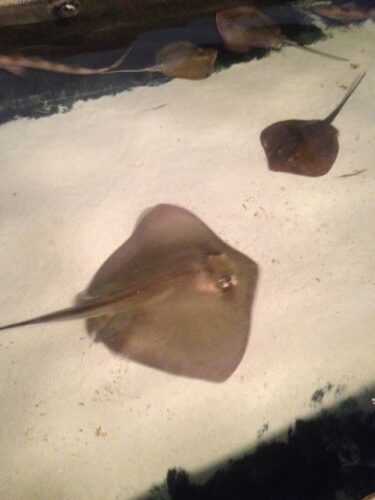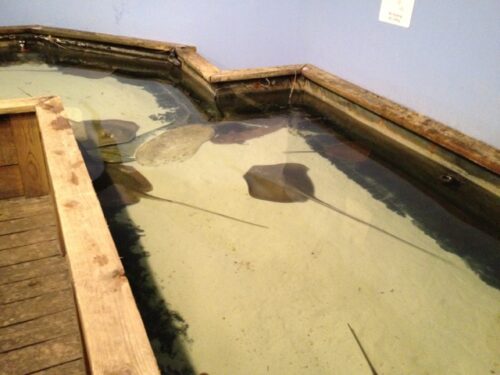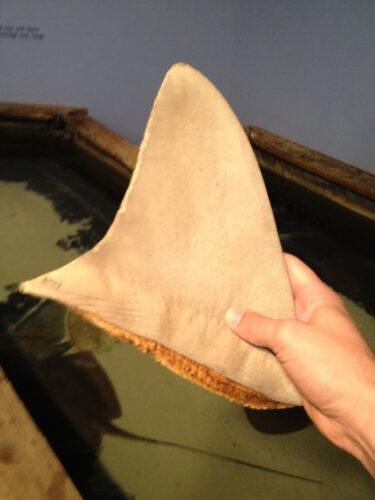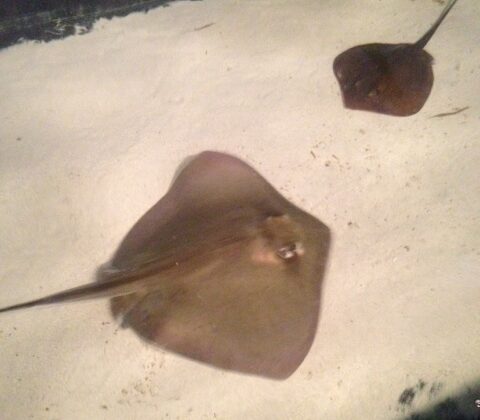
I took the next step this past Saturday in becoming a volunteer at the Albuquerque Aquarium (see previous post My First Day as a Public Aquarium Volunteer). It was Earth day so the aquarium was packed full of people. The staff and volunteers were running in all directions getting their displays ready for all the visitors. For earth day, the aquarium setup stations around the aquarium with volunteers manning each station. Each station contained information about conservation and the theme for the event was “Our Actions Matter”. I was assigned to work in the Shark and Ray Encounter for my first volunteer training shift where I shadowed two other experienced volunteers. They did a great job of showing me the ropes.
Touchpool Rules
We told all of the guests that came to the touchpool exhibit that they could only use two fingers to contact the animals. This helps decrease any stress to the animals because it keeps little fingers from trying to grab or poke at them. 325 guests came through the exhibit that day and all of them respected the rules. Here’s a picture of the sign that is posted around the exhibit:
The Sharks
There are two sharks that are kept in the Share and Ray Encounter exhibit—The brown banded bamboo shark and white spotted bamboo shark. The sharks spent most of the time in the back of the tank and out of reach except for one brown banded bamboo shark. He swam right to the side when the guests arrived and seemed to enjoy the free back scratch.
In the past, the exhibit also displayed shark eggs—also known as mermaid purses. The program was a little too successful though and the aquarium ended up with more sharks than they needed so they suspended raising baby sharks for now. The experienced volunteer that I was shadowing had a picture of one of the baby sharks from the past exhibit that was still inside of its egg. The aquarists had clipped over the outer layer of the egg casing so you could see the shark inside. Here’s the photo she sent me:
The Stingrays
There are also two species of stingray in the exhibit—The Southern Stingray and much smaller Atlantic Stingray (shown in the picture above). The Southern Stingrays loved the attention of the visitors. One in particular would slide up the walls of the tank near visitors and splash to get their attention practically begging for a free back rub. That stingray did this over and over again the entire time the exhibit was open.
Educational Tools
I was given two educational props to use to help teach the visitors about the animals. One was the clipped stingers from the stringrays in a small box and the other was a preserved shark fin.
Some of the younger guests that visited the exhibit were too shy or to small to reach the animals so they could touch the shark fin instead to see what they felt like. My co-volunteer also had stingray teeth to show people how sting rays eat. I regret that I don’t have a good picture of these props, but you’ll just have to come to the aquarium to see them. Here’s a photo of me with my props:
Frequently asked questions
Guests asked many questions while I was there and I did my best to answer. Some of these answers we gave were simplified for the younger guests.
Will the shark bite me?
The sharks are only bite things that they think are food and want to eat. Humans are not on their menu and they won’t bite you.
What about sharks attacking people in the wild?
Those shark attacks are a case of mistaken identity. People are clumsy swimmers compared to most sea creatures so the shark confuses all that splashing around with an injured animal such as a sea lion or seal. The shark attacks only happen when the sharks mistake humans for their regular food.
Will the Stringray sting me?
The stingrays in the aquarium all have their stingers trimmed off. The stinger is like a finger-nail in that it constantly grows back and it doesn’t hurt the animals at all to trim them off.
Are the stingrays venomous?
Stringrays are venomous, but since all of the stingrays in the touchpool have their stingers clipped off they are completely harmless.
Will the stingray bite me?
The stingray’s mouth is located underneath their body towards the middle. It would be difficult to even get your hands near the stingrays mouth in the exhibit and the stingrays are not interested in eating people so they will not bite you.
Isn’t this the fish that killed Steve Irwin?
Yes, Steve Irwin was killed by a stingray but it was a different type than the kind found in the touchpool. Steve Irwin was killed by a bull stingray because he accidentally startled the ray. Stingrays are generally docile creatures and only attack when provoked or startled.
I’m still learning and I’m sure my answers will evolve as I learn more about the animals in the exhibit. I’m scheduled for another shift in the Shark and Ray Encounter in a week and I’m looking forward to it.
